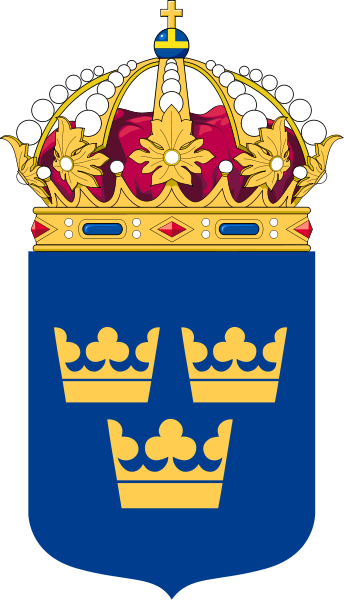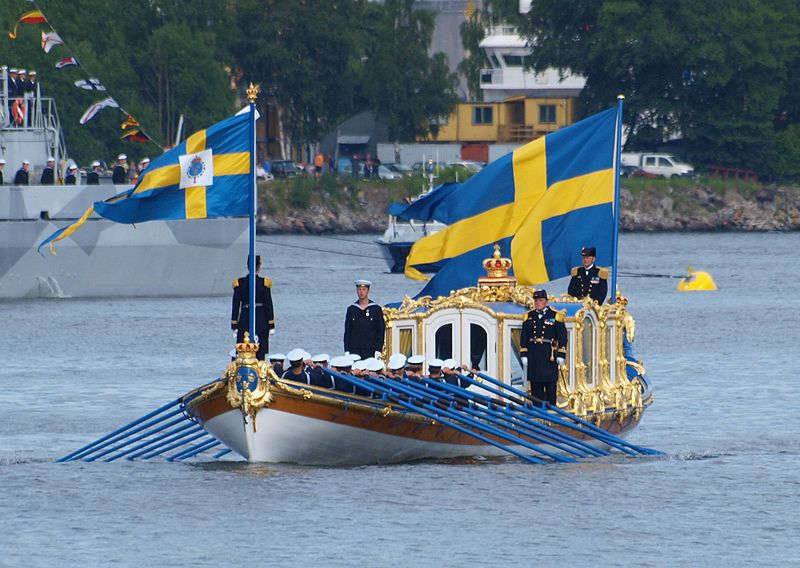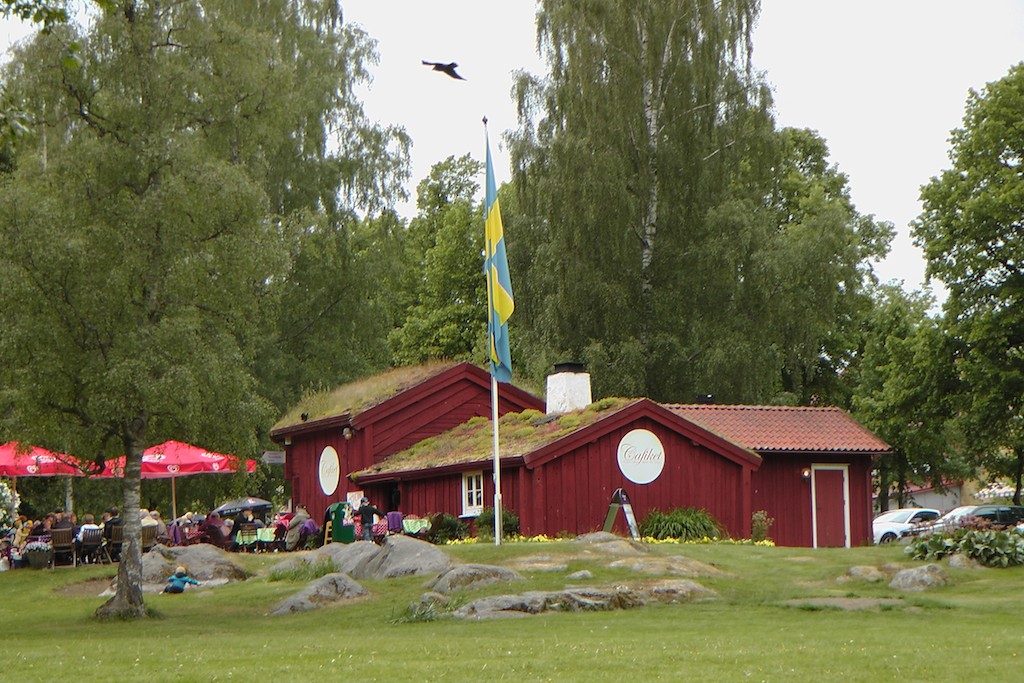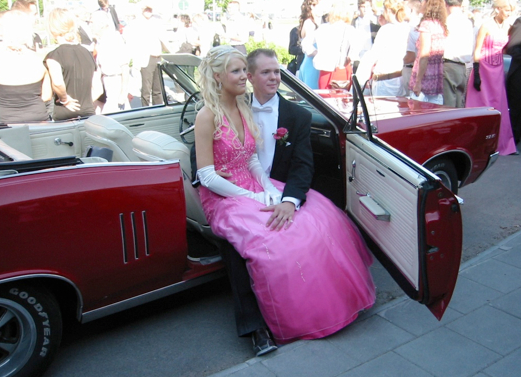Whose flag blue with a red cross. Swedish flag
Flag of Sweden stands in one row with others government symbolshaving ancient history. Every year on June 6, the Swedes celebrate the day state Flag.. What is his story and what do the colors of the flag mean?
Exterior of the flag of Sweden
The flag is a blue-colored rectangle with a slightly shifted left horizontally with a yellow Scandinavian cross. Blue background means devotion and justice. Yellow Cross symbolizes the religion of the state - Christianity. The story states that the Swedish flag is a copy of the flag of Denmark. Probably such a form was used as a symbol of opposition to the Danish rule.
History of the flag of Sweden
The exact date of the appearance of the Swedish flag is not known. It is believed that the flag is at least 500 years old. However, there is information that the king of Sweden Erich IX before the battle with the Finnish army in 1157, saw a cross in heaven. The king of the battle won and the vision was cleared as a sign.
Perhaps the flag colors are taken from the coat of arms kings of Magnus I Laton in 1275 or Albrechty Mecklenburg in 1364. There is evidence that until 1420 flag was white. Finally, the Swedish flag was adopted on July 13, 1821, approved on December 15, 1899.
The value of the flag of Sweden
For the Swedes, the flag of the state has a huge cultural value. The colors of the flag and the components of the coat of arms of the country are used as the symbols of almost all areas of life: in the emblems of national team teams; Color range of aircraft; Coloring vessels and other government agencies. Sweden is a Scandinavian country. The flags of these countries captured the Scandinavian cross as a symbol of general history and unity.
The flag of Sweden has a base of blue with a scandinavian crude yellow depicted on it, the edges of which extend along the entire length and width of the flag. The center of the cross on the flag is slightly shifted to the left horizontally.
Blue color denotes truth, dedication, and justice. Yellow Symbolizes generosity. The image of the cross on the flag, presumably, was introduced by Eric I Saint, King of Sweden, who saw the cross of golden color in the sky. The cross is a symbol of Christianity, he expresses the religious history of the state and its first rulers.
History of the flag of Sweden
Due to the fact that the flag of Sweden appeared at least in the twelfth century, sources of information about the history of the flag is extremely small. There are several versions of the origin of the colors of the Swedish flag and the image of the cross on the flag. The colors of the Swedish flag could be taken from the royal coat of arms used by the king of Magnus I ladomo in 1275, or by the King Albrecht Mecklenburg in 1364. The royal coat of arms of Sweden dates back to 1442, and it used blue and gold colors. According to some reports, the flag was originally white color, not gold or yellow, and his color was changed in 1420.
The decoration of the Swedish flag is based on the Danish flag, and possibly the flag was created as a symbol of resistance to the Danish rule. Flags of all scandinavian countries depict the Scandinavian Cross, like the Swedish flag to designate common story and unity. Moreover, during the Union of Sweden and Norway in 1815, the flags of these two countries were combined for some time, and one general flag was used in both countries.
On June 6, the Day of Independence and the Day of the Swedish flag is celebrated in Sweden. How notes this day and what it looks like swedish flag? This will be discussed in this article.
The history of the Swedish flag is very detailed in Wikipedia, I will focus on my personal observations about what the flag means for the Swedes and how they celebrate this holiday.
There is in two versions - ordinary and naval. The usual is a blue cloth with a yellow cross in the middle. The naval flag looks like the same, but he has three sharp edges.
On all flags of the Scandinavian countries are a cross, only a color scheme varies. On the photo on the left depicted Flags of Finland, Iceland, Norway, Sweden and Denmark (from left to right).
 On some sources, yellow and blue colors The Swedish flag was used because it was these colors that were used in a small coat of arms of Sweden, which depicts three yellow crowns on blue background. This coat of arms can now be found on the buildings of the Swedish Parliament (Rixdagen), parmalant committees, as well as on all police buildings. The coat of arms with three crowns indicates that the state body is accommodated in this building.
On some sources, yellow and blue colors The Swedish flag was used because it was these colors that were used in a small coat of arms of Sweden, which depicts three yellow crowns on blue background. This coat of arms can now be found on the buildings of the Swedish Parliament (Rixdagen), parmalant committees, as well as on all police buildings. The coat of arms with three crowns indicates that the state body is accommodated in this building.
IN ordinary life Swedes often mention the word " sina-Yellow"Which characterizes something original Swedish, typically Swedish. That is, the Swedes associate themselves with a blue-yellow color.
 On the Royal Swedish flags, the emblem in the middle of the flag is also depicted. An example of the Royal Flag you can see on the photo on the left, where the royal flag is installed on the royal boat.
On the Royal Swedish flags, the emblem in the middle of the flag is also depicted. An example of the Royal Flag you can see on the photo on the left, where the royal flag is installed on the royal boat.
 How to celebrate the day of the Swedish flag and the day of independence of Sweden? First, it is a legitimate day off and people resting from work. As this is just one day off, it is noted more modest than other holidays. But, as in other holidaysThe Swedish flag has been hosted on a large flagpole near the house or on public areas or buildings. Often the Swedes hang a small flag next to the door of their house or a small flag on the car.
How to celebrate the day of the Swedish flag and the day of independence of Sweden? First, it is a legitimate day off and people resting from work. As this is just one day off, it is noted more modest than other holidays. But, as in other holidaysThe Swedish flag has been hosted on a large flagpole near the house or on public areas or buildings. Often the Swedes hang a small flag next to the door of their house or a small flag on the car.
 On this day, I saw the suspended blue-yellow flags even on buses, baby carriages, as well as tied to bags, to machines, in general, who like more. Hanging the flag means the solemnity of the moment, but in no way a patriotic attitude, which may might be associated with the day of independence or the day of the flag. For practical Swedes, this day is a reason for recreation, communication and fun.
On this day, I saw the suspended blue-yellow flags even on buses, baby carriages, as well as tied to bags, to machines, in general, who like more. Hanging the flag means the solemnity of the moment, but in no way a patriotic attitude, which may might be associated with the day of independence or the day of the flag. For practical Swedes, this day is a reason for recreation, communication and fun.
 On this day, people are resting, preferably in a family circle and with children who have children. The playgrounds on this day are overflowing, the parks are filled with resting on picnics, in the city full of crowds and eagerly walking and communicating the Swedes. Although often urban entertainments suggest sitting in a cafe or shopping with girlfriends.
On this day, people are resting, preferably in a family circle and with children who have children. The playgrounds on this day are overflowing, the parks are filled with resting on picnics, in the city full of crowds and eagerly walking and communicating the Swedes. Although often urban entertainments suggest sitting in a cafe or shopping with girlfriends.
 Often weddings are planned on this day. IN main Church A small city of Vse. I saw four wedded couples on this day and a big crowd of guests even beyond the gate of the church. On this day, it also often falls graduation balls In Swedish gymnasiums and I met several convertible and limousines filled with glamorous teenagers, dressed in chic evening dresses And tuxedo and with beautiful hairstyles. They traveled around the city on expensive cars, threw satisfied with satisfied glances on passersby, radiated joy and delight. Sorry school Balls We are held only once a year!
Often weddings are planned on this day. IN main Church A small city of Vse. I saw four wedded couples on this day and a big crowd of guests even beyond the gate of the church. On this day, it also often falls graduation balls In Swedish gymnasiums and I met several convertible and limousines filled with glamorous teenagers, dressed in chic evening dresses And tuxedo and with beautiful hairstyles. They traveled around the city on expensive cars, threw satisfied with satisfied glances on passersby, radiated joy and delight. Sorry school Balls We are held only once a year!
On this day, the competition on the run around the park with vacationers was also held. In Sweden like such wellness eventsThe purpose of which is to attract as many participants as possible, as well as as much attention as possible by the public, in order to end up improving the health of the nation.
In each municipality of Sweden on this day, the congratulations ceremony of all received Swedish citizenship are also held.
In Stockholm there is a day open doors In the royal palace, and the open-air concert in Skanese passes.
Proportions: 5: 8
Description of the Swedish Flag:
The flag of Sweden consists of a blue background with a yellow Scandinavian cross. Vertical strip The cross is shifted from the center to the left of the center.
The value of the Swedish flag:
Most likely, the flag of Sweden as a foundation took the design of the flag of Denmark. Colors are yellow and blue - came from the Swedish coat of arms, on which three yellow crowns were depicted on a blue background. The cross meets almost all the flags of the Scandinavian Peninsula.
History of the Swedish flag:
The accurate age of the Swedish flag is unknked, but the oldest drawn images of the blue fabric with a yellow cross are torn to the 16th century. The Swedish flag was officially recognized on June 22, 1906, which makes it one of the oldest flags in the world. In 1569, the Royal Decree issued by the Swedish king John III, it was stated that all Swedish combat flags should be with a yellow cross. From 1814 to 1906 placed the emblem representing the union with Norway in the upper left corner blue-Yellow Flag. The union broke up in 1905, and the emblem was removed in 1906, as a result of which we know the flag as it is now.
There is a law, which states that as soon as the Swedish flag comes into disrepair, it should be immediately burned so that no one uses it for any other needs.
